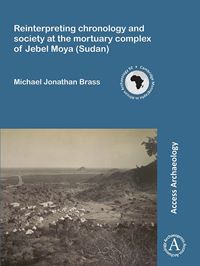| Main » Ad Board » ДРЕВЕН ЕГИПЕТ И АФРИКА » Археология |
Michael J. Brass - Reinterpreting chronology and society at the mortuary complex of Jebel Moya
| 11.03.2023, 17:06 | |
Археологически обзор на некропола в Джебел Моя (южен централен Судан), най-големият древен погребален комплекс на пастирските култури в региона с над 3100 погребения. Хронологичният обхват е прибл. от 5000 до 500 г. пр. н.е. Разкопките разкриват интересни зависимости на икономическия и политически живот от екологичните условия и търговски контакти със суданската държава Мерое и дори с Египет. - на английски език, от ResearchGate, формат PDF. Сваляне с ляв бутон (downloading by left button) и после през бутона Download.АЛТЕРНАТИВЕН ЛИНК / ALTERNATIVE LINK: - на английски език, от MEGA, формат PDF. Сваляне с ляв бутон (downloading by left button) и после през бутона Download.
| |
| Views: 188 | Placed till: 11.04.2023 | Rating: 0.0/0 | |

